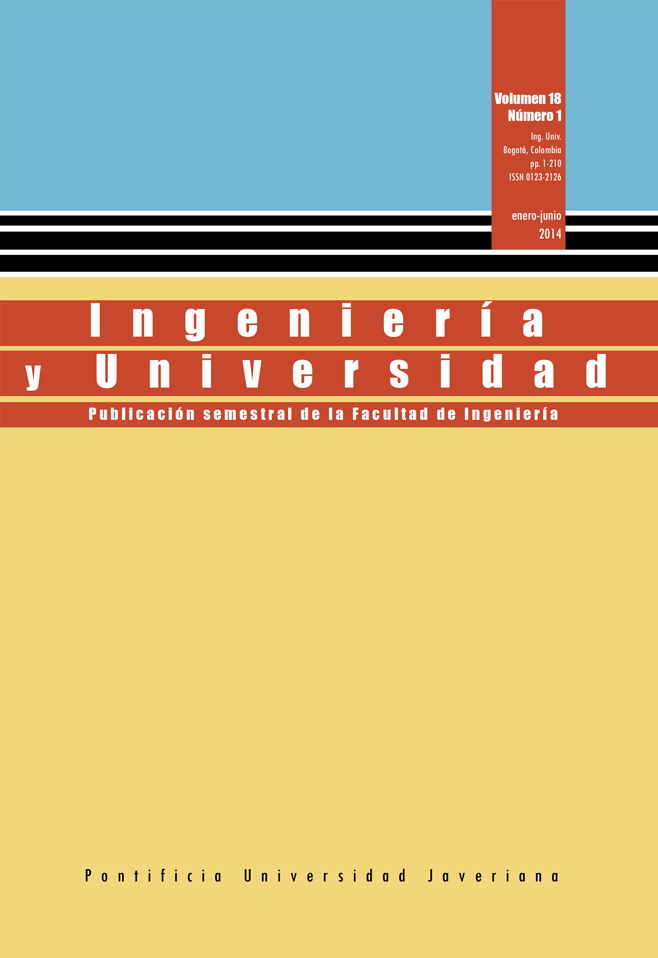Abstract
This article shows the most relevant results, related to the optimum design of a multilayer electromagnetic absorber for the wireless communications range. It was designed through two optimization strategies, a metaheuristic (Particle Swarm Optimization [PSO]) and a deterministic one (Interval Analysis). Despite achieving similar results, the last one proved to require an increased amount of computation time. Nevertheless, and due to its nature, the solution achieved was unique, while in PSO the results reproducibility was low, possibly due to the high complexity of the objective function.
Bronwell, A. Transmission-line analogies of plane electromagnetic-wave reflections. Proceedings of IRE. 1994, vol. 32, no. 4, pp. 233-241.
Chamaani , S. et al. Multi-objective particle swarm optimization for electromagnetic absorber design. Progress in Electromagnetics Research (PIER). 2008, vol. 79, pp. 353–366.
CUI, S. WEILE, D.S. and VOLAKIS, J.L. Novel planar electromagnetic absorbers design using genetic algorithm. IEEE Transactions on Antennas and Propagation. 2006, vol. 54, no. 6, pp. 1811-1817.
Cui, S. and Weile, D. S. Application of a novel parallel swarm optimization to design electromagnetic absorber. Antennas and Propagation Society International Symposium, IEEE. 2005, pp. 3616-3624.
Kennedy , J. and Eberhart , R.C. Particle swarm optimization. Proceedings of IEEE Con, Neural Networks IV, Piscataway, NJ, 1995, pp. 1942-1948.
Liu, H. et al. Electromagnetic wave absorber optimal design based on improved particle swarm optimization. EMC´2009, IEICE, Kyoto, Japan, 2009, pp. 797-800.
Michielssen , E. et al. Design of lightweight, broad-band microwave absorbers using genetic algorithms. IEEE Transactions on Microwave Theory and Techniques. 1993, vol. 41, no. 617, pp. 1024-1031.
Moore, R.E., Baker, R. M. and CLOUD, M.J. Introduction to interval analysis. Philadelphia: Society for Industrial and Applied Mathematics, 2009.
NORNIKMAN H. et al. Study and simulation of an edge couple Split ring resonator (EC-SRR) on truncated pyramidal microwave absorber. Progress in Electromagnetics Research. 2012, vol. 127, pp. 319-334.
Robinson , J. and Rahmat -Samii, Y. Particle swarm optimization in electromagnetics. IEEE Transaction on Antennas and Propagation. 2004, pp. 397-407.
Vecchia, P. et al. Exposure to high frequency electromagnetic fields, biological effects and health consequences (100 kHz-300 GHz). ICNIRP 16, 2009.
WATTS C. et al. Metamaterial electromagnetic wave absorbers. Verlag: Wiley-VCH, 2012.
ZHAO, B. et al. Fabrication and electromagnetic characteristics of microwave absorbers containing Li0.35Zn0.3Fe2.35O4 micro-belts and nickel-coated carbon fibers. Journal of Magnetism and Magnetic Materials. 2013, vol. 345, pp. 249-254.
This journal is registered under a Creative Commons Attribution 4.0 International Public License. Thus, this work may be reproduced, distributed, and publicly shared in digital format, as long as the names of the authors and Pontificia Universidad Javeriana are acknowledged. Others are allowed to quote, adapt, transform, auto-archive, republish, and create based on this material, for any purpose (even commercial ones), provided the authorship is duly acknowledged, a link to the original work is provided, and it is specified if changes have been made. Pontificia Universidad Javeriana does not hold the rights of published works and the authors are solely responsible for the contents of their works; they keep the moral, intellectual, privacy, and publicity rights.
Approving the intervention of the work (review, copy-editing, translation, layout) and the following outreach, are granted through an use license and not through an assignment of rights. This means the journal and Pontificia Universidad Javeriana cannot be held responsible for any ethical malpractice by the authors. As a consequence of the protection granted by the use license, the journal is not required to publish recantations or modify information already published, unless the errata stems from the editorial management process. Publishing contents in this journal does not generate royalties for contributors.


